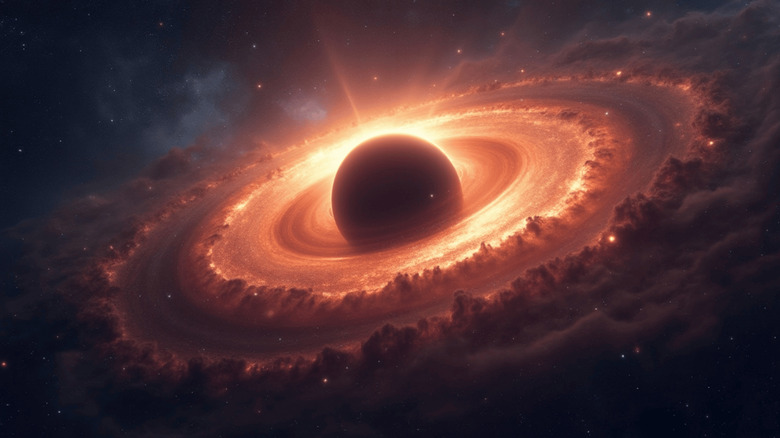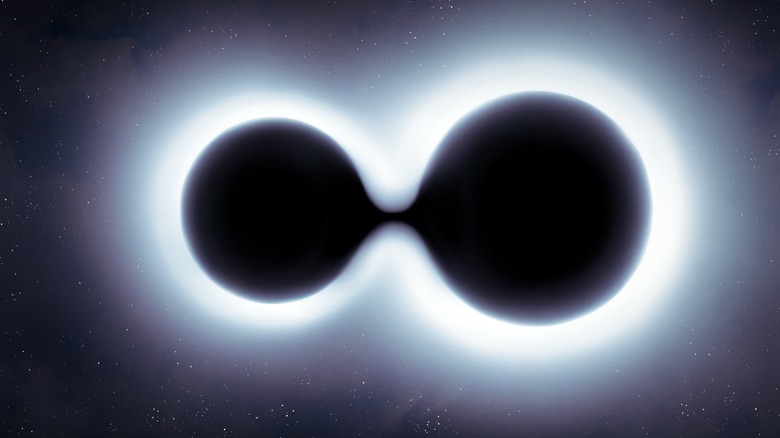Scientists Just Found A Black Hole That Shouldn't Exist
Astronomers say they've discovered a new record holder for the most massive black hole merger to date. The merger is so big — roughly 255 solar masses — that it shouldn't technically be possible according to our current understanding of physics and black hole formation.
Because of how big the merger is, astronomers estimate that each black hole had to be at least around 100 to 140 times the mass of the sun before the merger. These measurements would put the two black holes in what scientists call the "upper-mass gap," which is a range of masses where black holes aren't believed to form directly from the death of stars, as stars that big typically do not leave behind a stellar remnant.
But the mystery doesn't stop at the size of these two black holes, Mark Hanna, a member of the LVK (LIGO-Virgo-KAGRA) Collaboration from Cardiff University said in a statement. Instead, the researchers note that the black holes are both spinning at 80 to 90% of their top speed, making them the highest spinning black holes that the LVK has ever recorded, too.
Finding the record-breaking black holes
The massive black hole merger was found during the fourth run of the LVK network back in November of 2023. Designated GW231123, the merger is believed to be the most massive black hole binary that humanity has observed using gravitational waves. The LVK is a network of gravitation wave detectors made up of the LIGO, Virgo, and the Kamioka Gravitational Wave Detector (KAGRA). It all began with LIGO's first detection of gravitational waves in 2015, and since then, the three detector systems have helped detect and catalogue thousands of black holes, neutron star mergers, and more. Some hope that gravitational waves could even let us see into black holes in the future.
The details of this latest finding are currently available in a preprint study released on the arXiv server, but Mark Hannam says that "black holes this massive are forbidden through standard stellar evolution models," which has added some scrutiny to the discovery. Not only is understanding these black holes and how they formed and merged important to ratifying the discovery, but it could also be important to helping us round out our understanding of black hole formation as a whole.
In fact, scientists have been making quite a few major discoveries as of late, especially when it comes to black holes. Not only have scientists discovered an entirely new class of black holes, recently, but the discovery of this merger could further upend our understanding of the cosmos even more. But that's one of the wonderful things about science. Our understanding and our view of the universe is constantly changing as we unlock new clues and details. The discovery of this massive black hole merger is just another clue that scientists will need to decode and work out.

